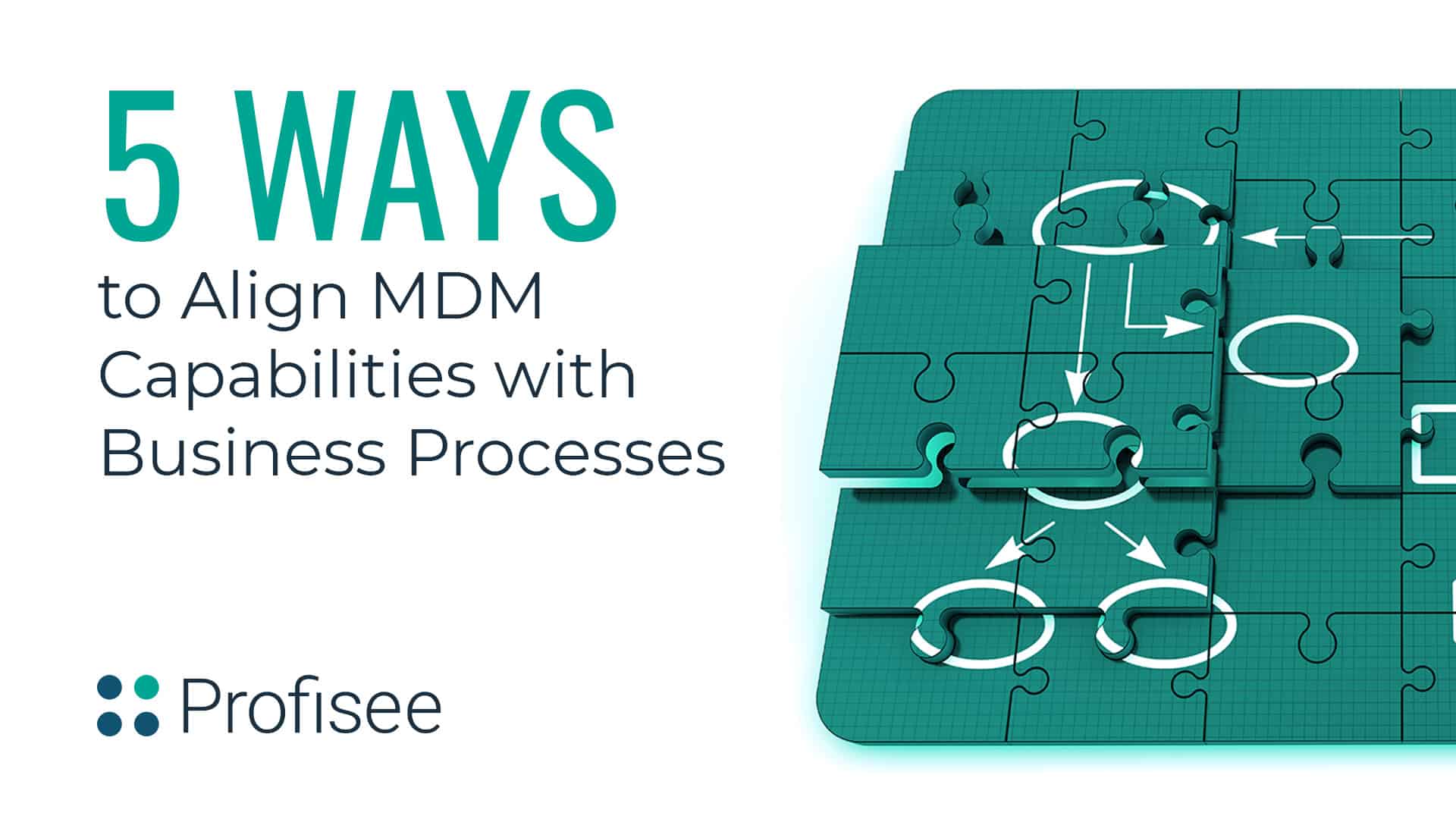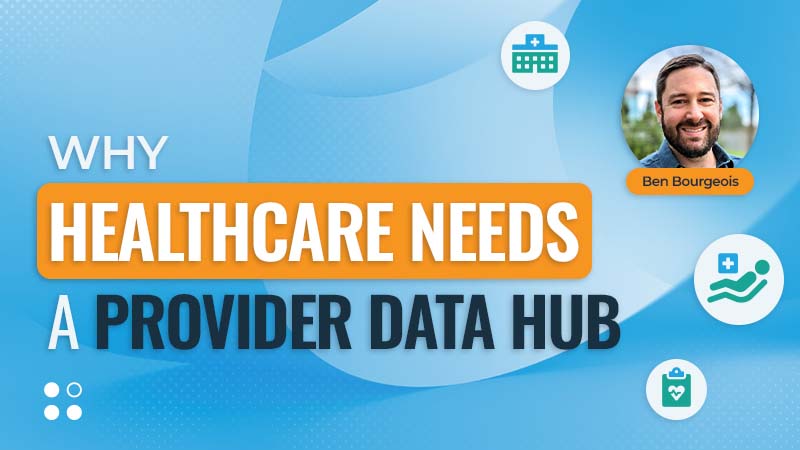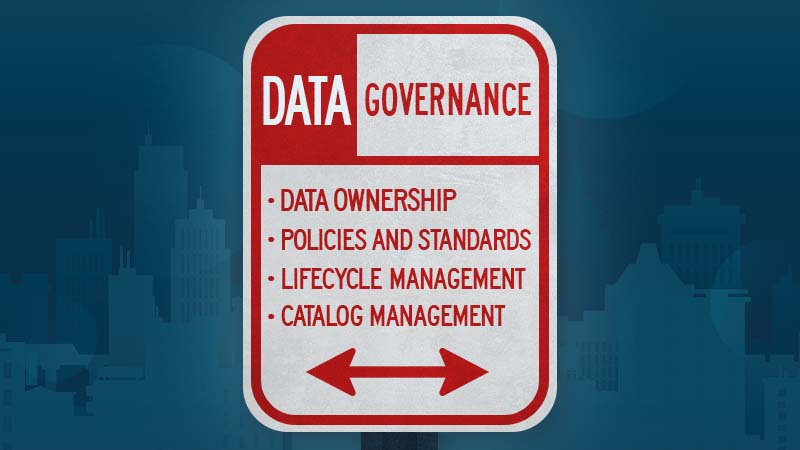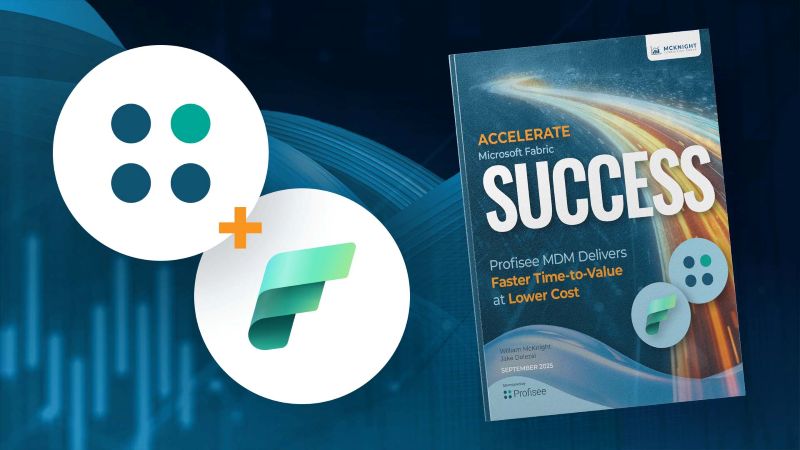Master Data Management (MDM) capabilities are not just centered on data. It is also about managing the business processes that rely on well managed master data and the processes that create, update and retire that master data.
Here are 5 step-by-step ways to align MDM capabilities with the key business processes in your organization.
1. Build a Business Glossary with Business Rules for Master Data
We all know the problem: We use the same term but mean two different things. Or we use two different terms but mean the same thing. Within master data management this is a huge challenge. The first step in cracking that nut is to build a business glossary. The business terms in use around master data are good examples of different meanings and the business glossary must explain for example what exactly a customer role means in your enterprise, what exactly a vendor type is, what exactly defines a product variant and so on. The business glossary will optimally be a part of a wider metadata management framework encompassing the technical aspects of master data as well. The next step is to apply the business rules to these terms. Here we have:- External business rules, which are rules based on laws, regulations within industries and other rules imposed from outside your organization.
- Internal business rules, which are rules made up within your organization in order to make you do business more competitively than colleagues in your industry do.
- In order to open a business account, you must supply a valid Legal Entity Identifier (like Company Registration Number, VAT number or whatever applies to the business and geography in question)
- A delivery address must be verified against an address directory (valid for the geography in question)
- In order to bring a product into business there is a minimum requirement for completeness of product information.
2. Get a Grip on Business Process Mapping
Understanding the role of master data in business processes is a foundation for optimizing and ultimately transforming the business in the digital era. In that quest, we can look at the different roles played by master data: Business processes that purely consume master data An example of such a business process is the execution of a direct marketing campaign. Doing this in an effective way is heavily dependent on clean and updated master data. A key capability is the ability to separate which targeted real world entities belong to the so called “new market” and which are existing customers (or prospects or churned customers). When working with known customers the ability to intelligently relate to previously purchased products and their categories of interest is paramount. Often knowing about the right relationship between targeted parties and locations is very valuable. When doing MDM implementations and ongoing refinement the insight on how master data is used and creates value in business processes is the starting point. Business processes that potentially change master data The most commonly mentioned business-wide process is the order-to-cash process. During that process the customer master data may be especially affected. A key question is whether the order is placed by a new customer or a known customer. If it truly is a new customer, then effective collection of accurate and timely master data determines the successful outcome of receiving the cash based on correct credit check, correct shipping information and more. If it is a known customer there is a chance to validate and eventually update customer master data. While customer master data often is changed through business processes having another main purpose, this is not the case with product master data. Business processes with the purpose of maintaining master data An example is from within manufacturing, distribution and retail where we have business processes with the sole purpose of enriching product master data. With the rise of customer self-service through e-commerce, the data quality requirements for completeness and other data quality dimensions have increased a lot. This makes the orchestration of complex business processes for enriching product master data a whole new flavor of Business Process Management where master data itself is the outcome – with the goal to be optimally used in order-to-cash and other business processes.3. Embrace Event Management
Your business process mapping will reveal a lot of events that trigger the involvement of master data. Orchestrating these events will be an important part of an MDM implementation. The master data events may be from internal processing as well as triggered by external circumstances. External events around party master data are for example:- When someone changes name
- When someone moves to a new address
- When someone moves to another Line of business (or a legal entity dissolves)
- When a supplier introduces a new product
- When a supplier introduces a new available data element or digital asset
- When a merchant requires a new data element or digital asset
4. Nail how Master Data Will be Created, Read, Updated and Deleted
Based on your business glossary with business rules, your business process mapping and the identified events happening around master data you can build the picture of where master data plays a role in the order-to-cash process, in the procure-to-pay process and all other processes existing within your organization and between you and your trading partners. Pro tip: Increasingly self-service scenarios must also be included. That covers customer self-service registration, supplier self-service registration and suppliers providing product information by automated services.5. Deploy Master Data Fueled Workflows
No matter if master data comes from the outside or originates from inside your organization the flow of master data must be governed.- First, the approval process must be supported by workflows where existing master data is presented to the approver and the state of the master data (including the before after state) is seamlessly reflected in the master data repository.
- Second, there will be a range of master data and data quality functionality that should be operationalized by being built into master data workflows. This includes on the fly matching of party master data between internal and external sources and address verification.
Conclusion
MDM and its alignment to critical business processes must go hand in hand when doing an MDM implementation. The starting point is a clear business glossary. The path will take you over identifying relevant business rules, mapping business processes, having an overview over all master data events and the master data lifecycle of onboarding, change requests and end-of-life handling. Based on that, you can apply the required master data workflows. The entire MDM capability lifecycle ties people, process and technology together and helps your business focus on what you do best – growing your business.
Forrest Brown
Forrest Brown is the Content Marketing Manager at Profisee and has been writing about B2B tech for eight years, spanning software categories like project management, enterprise resource planning (ERP) and now master data management (MDM). When he's not at work, Forrest enjoys playing music, writing and exploring the Atlanta food scene.











